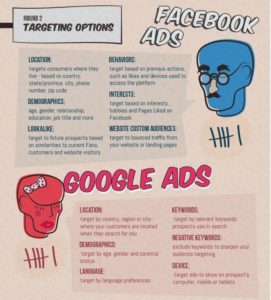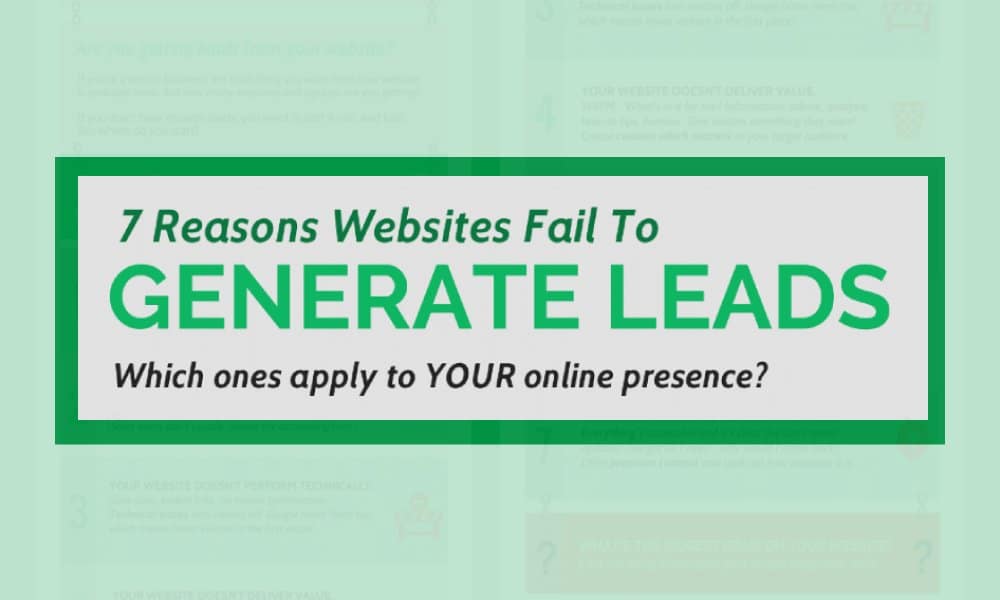Today’s post looks at some simple, actionable ways to drive website traffic.
Maybe you have good traffic levels, but you’d like more. Good on you!
Or maybe you don’t have much traffic at all. Don’t feel bad – you’re not alone!
There might be 3.26 billion internet users in the world, but there are also 966 million websites, so there’s a lot of competition. (Data from Hosting Facts.) In fact, lack of traffic is the commonest issue identified by users of our website assessment tool. That’s why we thought it was time to list some ways to build traffic.
One word of warning before we dive in, though. Remember, your end goal isn’t just more traffic – it’s more quality traffic. Since we’re talking business websites here, ‘quality traffic’ means visits from people who fit in your target market. The more clearly you can define your target market, the better. (Hint – ‘everyone’ is not a clear definition, and is almost certainly not true. Check out this post on developing personas to find out why.)
We’ve divided our traffic-building methods into a number of top-level categories. We’ll look at the first three this week and the last three in our next post.
- Online advertising
- Offline
- Online content promotion
- Using your network
- Making your own site work harder
Online Advertising
Paid advertising online is the quickest way to drive traffic to your website. The downside, of course, is that you don’t necessarily build long term traffic. So when you stop paying, the traffic stops too.
Also, make sure you are building the right kind of traffic. There is no point paying to drive people to your website if they’re not actually going to purchase or enquire. Before you invest too much in paid advertising, try to be sure:
- You are clear about your target market.
- Your website functions well.
- You have a clear call to action.
- You have tracking systems set up. (That means tracking conversions, not just traffic!)
You may also want to check out our PPC resources page for more information about some of the traffic-building options listed below.
1. Adwords
Google Adwords is usually the first thing that comes to mind for online advertising. Google pioneered the PPC (pay-per-click) model, which means you only pay if someone actually clicks through to your site. They’re still the biggest, earning US$30 billion from online advertising in the USA alone last year.
2. Facebook Advertising
Facebook scooped up US$8 billion from the American market in 2015, second only to Google, but they’re growing fast! Hardly surprising, since they have up to 4,000 data points about each user.
There’s a tendency to think Facebook works for B2C only, but there’s plenty of examples of successful B2B advertising on Facebook.
3. Twitter Webcards
OK, so Twitter’s not as popular with investors as it was, but there are still opportunities to drive website traffic via a WebCard campaign. Plus you can track conversions.
4. LinkedIn Advertising
You’d expect LinkedIn to be the B2B platform of choice, given its very nature, plus the ability to target by industry, job title, group membership and more. But the minimum bid of US$2 and minimum daily budget of US$10 make it a bigger commitment than the other platforms looked at here.
5. Industry Sites
Relevant associations and publications may have websites where you can advertise.
Just remember that you want an association or publication which is relevant to your target customers, not to your competitors!
6. Sponsored Content
Sponsored content – sometimes also called ‘native advertising’ – is the internet equivalent of advertorial. In addition to industry sites, look for blogs which are popular with your target market.
Email Marketing
Email remains one of the most effective ways to drive website traffic – and get business.
In Australia, email is covered by the Spam Act. If you don’t comply, you could be liable for up to $1 million in fines. Plus the requirements are good business practice to avoid upsetting potential clients anyway, so why would you not comply?
7. Your Own Email Database
It’s a no brainer that you’ve got some contacts already who might be interested in your website.
 If you have an email list, use it. If you have a load of business cards, but no list, outsource the task of creating a list. Employ a local student or scan all your cards and post a job on Upwork.
If you have an email list, use it. If you have a load of business cards, but no list, outsource the task of creating a list. Employ a local student or scan all your cards and post a job on Upwork.
We had one B2B client who had about 2,000 emails – already in her CRM – which she wasn’t using at all. When we started sending a regular email newsletter she converted three inquiries from the first four issues of the newsletter, putting over $50,000 into her pocket. Yes, this post is about ways to drive website traffic, not grow revenue, but it’s a good story to share anyway!
If you’re still not convinced, read this post about why an email newsletter is a must.
8. Sponsored Emails
If you don’t have a list, or don’t have a big list, you may be able to use someone else’s. It’s time to look at those industry sites and blogs again. Some of them will send an email to their database on your behalf, with your message and joint branding. Some of them will let you advertise in their regular newsletter.
The advantage of sponsoring an email over sponsored content or advertising on site is that it’s far more immediate for the user. It reaches more people. (How many websites do you get emails from, but you don’t visit regularly?) On the other hand, sponsored content may hang around longer and over time, that may help with SEO.
When you look into sponsored email, always ask about the size of the list, the open rate and any demographic information available. If you’re only operating in Sydney, there’s little point in emailing to a global audience.
9. Buying Email Lists
There are email lists commercially available. Be very careful though! Are you sure the email addresses were acquired legally? Often they have been scraped or guessed. Even if they haven’t, the email is basically completely cold, so recipients are unlikely to react positively. In fact, response rates are very low. (With sponsored email as described above, they may not know you, but they do know the people who are recommending you.)
10. Sharing and Forwarding
A quick hint when you’re sending your email newsletters.
- Include share buttons for any social media that you’re on.
- Include a line saying ‘If you know anybody who’d be interested, please forward this email.’
If you don’t ask you won’t get. If you do ask you might get. It’s amazing how people won’t think to forward something unless you suggest it.
Offline
When you’re looking to drive website traffic, don’t forget that the people who visit your website also exist in the offline world.
11. Offline paid advertising
Make sure you include your website address. It doesn’t cost any more to do that!
12. Stationery
You probably have your website address and your email on your business card. But what about other stationery? if you have letterhead, envelopes, compliments slips, even invoices and receipts, include your website.
13. Have your web address on your shopfront or door.
Your website is there after hours when you’re not.
14. Company vehicles
This can give you lots of visibility all over the place. If it’s not obvious from the company name, you may want to include a slogan so people can tell what you do.

15. Promotional items
Don’t just put a brand on them. Put contact details on. Your business phone number and your website url.
16. Voicemail and IVR
If people call when the office is closed, direct them to your website instead. Just make sure you have an easily accessible contact form or email address. And make sure you respond promptly when your business opens again!
So there you go. Fifteen solid, actionable ways to drive website traffic – plus one more to investigate carefully!
Our next post looks at how you can use content promotion and leverage your network to increase web traffic. Plus a refresher on what you need to do on your website itself!








